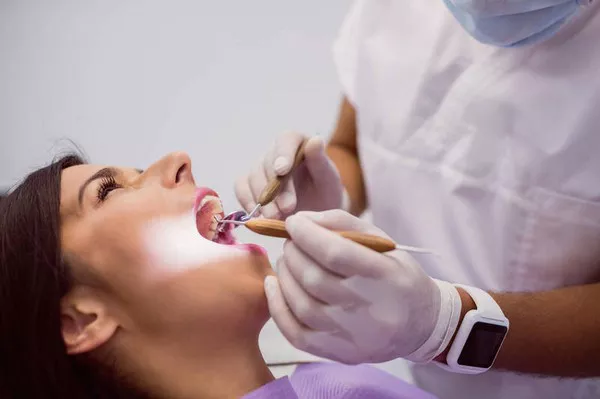Dental fillings are a common and effective way to treat cavities and restore the structure of a damaged tooth. However, in some cases, a tooth that has been previously filled may require additional intervention in the form of a root canal. This scenario can raise questions and concerns for patients who wonder why a root canal might be necessary after a filling. In this comprehensive article, we will explore the reasons why a root canal may be needed following a dental filling, the signs that indicate this procedure is necessary, and the importance of timely dental care for maintaining oral health.
Understanding Dental Fillings
Dental fillings are used to treat cavities, which are areas of tooth decay caused by bacteria and acid erosion. The primary goal of a dental filling is to:
Remove Decay: The first step in a filling procedure is to remove the decayed portion of the tooth. This helps prevent the cavity from spreading further.
Restore Tooth Structure: After removing the decay, the dentist fills the cavity with a dental material, such as amalgam (silver fillings) or composite resin (tooth-colored fillings). This restores the tooth’s structure and function.
Prevent Further Decay: Dental fillings seal off the treated area, preventing bacteria from re-entering and causing additional decay.
The Dental Filling Process
The dental filling process typically involves the following steps:
Numbing: Before the procedure begins, the dentist administers a local anesthetic to ensure the patient does not experience pain during the filling.
Decay Removal: Using specialized instruments, the dentist thoroughly removes the decayed portion of the tooth.
Tooth Cleaning: The dentist cleans the tooth to ensure that no debris or bacteria remain in the cavity.
Filling Material Application: The dentist applies the chosen filling material to fill the cleaned cavity.
Shaping and Bonding: For composite resin fillings, additional steps may be necessary to shape the filling and ensure it bonds securely with the tooth.
Adjustments: The dentist checks the bite to ensure that it’s comfortable and that the filling does not interfere with natural tooth alignment.
Polishing: After the filling is in place and properly shaped, the dentist polishes the tooth to create a smooth and natural appearance.
When a Root Canal May Be Needed After a Filling
While dental fillings are successful in treating many cavities, there are situations where a root canal becomes necessary even after a tooth has been filled. Here are the primary reasons why a root canal may be required:
Deep Decay: If the initial cavity was extensive and the decay had reached the inner pulp chamber of the tooth, it may not have been entirely removed during the filling procedure. In such cases, the remaining bacteria can cause infection and inflammation of the pulp, leading to the need for a root canal.
Fractured Tooth: A tooth that has been previously filled may develop a crack or fracture over time. This can allow bacteria to penetrate the tooth’s inner chambers, leading to infection and the need for a root canal.
Recurrent Decay: Sometimes, new decay can develop around the edges of an existing filling, making it difficult to access and treat the new cavity without removing the filling and performing a root canal.
Pulp Inflammation: In some instances, the filling material or the procedure itself can irritate or inflame the dental pulp over time. This inflammation may require root canal therapy to relieve pain and save the tooth.
Signs Indicating the Need for a Root Canal After a Filling
Patients should be aware of certain signs and symptoms that may indicate the need for a root canal after a filling. These include:
Persistent Pain: If you experience persistent or severe pain in a tooth that has been previously filled, it could be a sign of pulp infection or inflammation.
Sensitivity to Hot and Cold: Heightened sensitivity to hot or cold temperatures, especially when consuming food or beverages, may indicate pulp-related issues.
Swelling or Abscess: Swelling, a pimple-like bump on the gums, or the development of an abscess near the filled tooth can be signs of infection.
Discoloration: A change in the color of the tooth, especially darkening, can signal pulp problems.
Prolonged Discomfort: If you continue to experience discomfort or pain in the filled tooth weeks or months after the procedure, it’s essential to consult your dentist promptly.
The Importance of Timely Dental Care
Timely dental care is crucial for addressing potential issues that may arise after a filling. Early detection and intervention can often prevent the need for more extensive and invasive procedures like root canals. Regular dental check-ups and open communication with your dentist about any concerns or symptoms are key to maintaining your oral health.
Conclusion
While dental fillings are an effective way to treat cavities and restore teeth, there are instances where a root canal becomes necessary even after a filling has been placed. Deep decay, fractures, recurrent cavities, and pulp inflammation are common reasons for this additional treatment. Being aware of potential signs and symptoms, such as persistent pain, sensitivity, swelling, and discoloration, is crucial for seeking timely dental care.
Ultimately, early detection and proactive dental care can help prevent the need for a root canal after a filling, ensuring the continued health and longevity of your teeth. Consult with your dentist if you have concerns about a filled tooth or experience any unusual symptoms to receive prompt and appropriate treatment.
Related Topics:
































